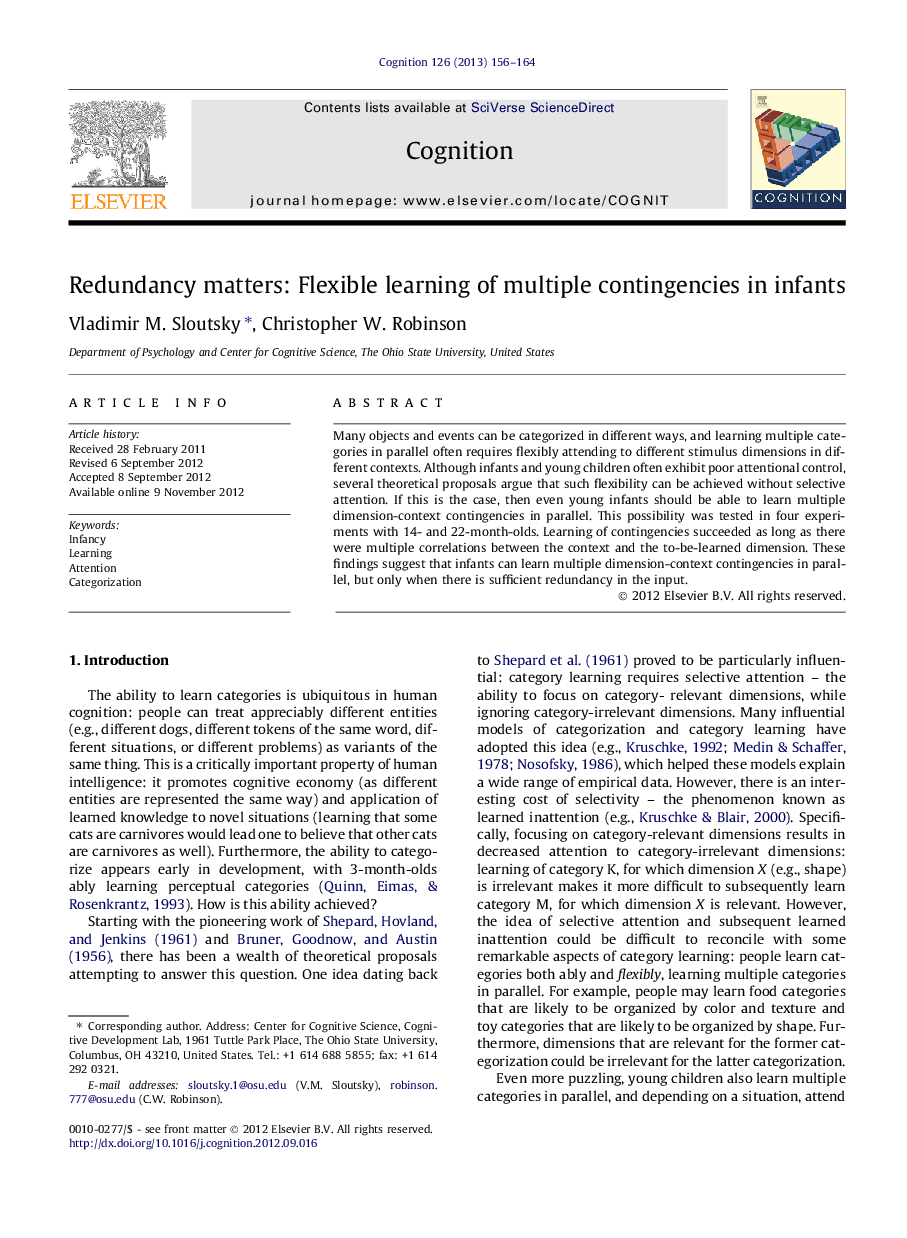| Article ID | Journal | Published Year | Pages | File Type |
|---|---|---|---|---|
| 926450 | Cognition | 2013 | 9 Pages |
Many objects and events can be categorized in different ways, and learning multiple categories in parallel often requires flexibly attending to different stimulus dimensions in different contexts. Although infants and young children often exhibit poor attentional control, several theoretical proposals argue that such flexibility can be achieved without selective attention. If this is the case, then even young infants should be able to learn multiple dimension-context contingencies in parallel. This possibility was tested in four experiments with 14- and 22-month-olds. Learning of contingencies succeeded as long as there were multiple correlations between the context and the to-be-learned dimension. These findings suggest that infants can learn multiple dimension-context contingencies in parallel, but only when there is sufficient redundancy in the input.
► Parallel learning of multiple categories often requires cognitive flexibly. ► Infants lack this flexibility, and should fail to learn categories in parallel. ► We demonstrate that 14- and 22-month-old infants can succeed in such learning. ► Learning required multiple correlations between the context and the category. ► When learning is supported by context, flexibility does not require cognitive control.
